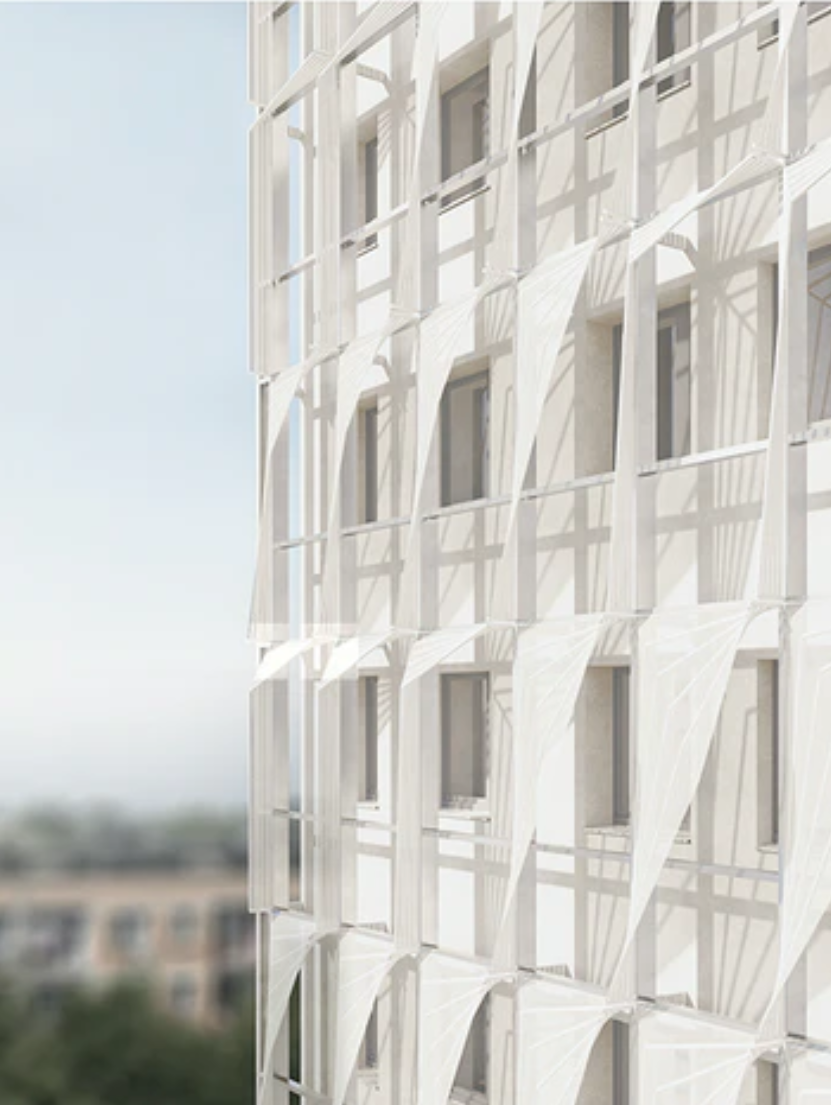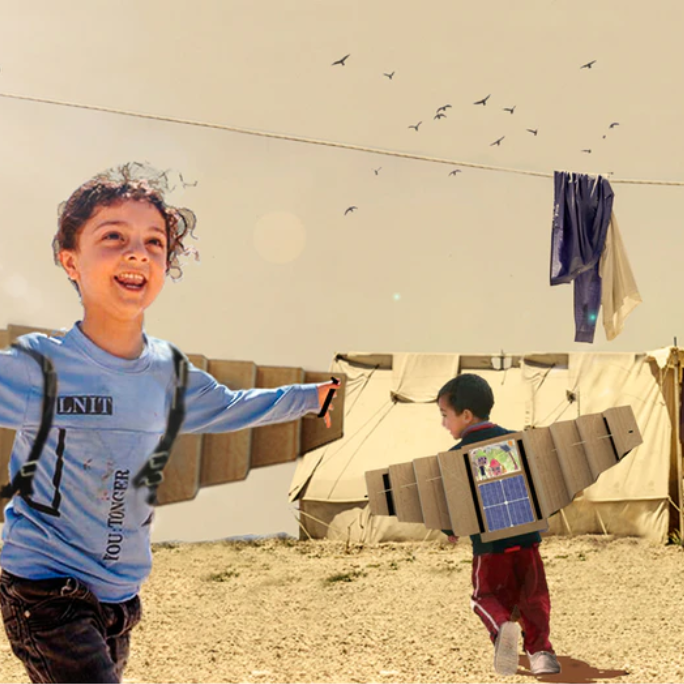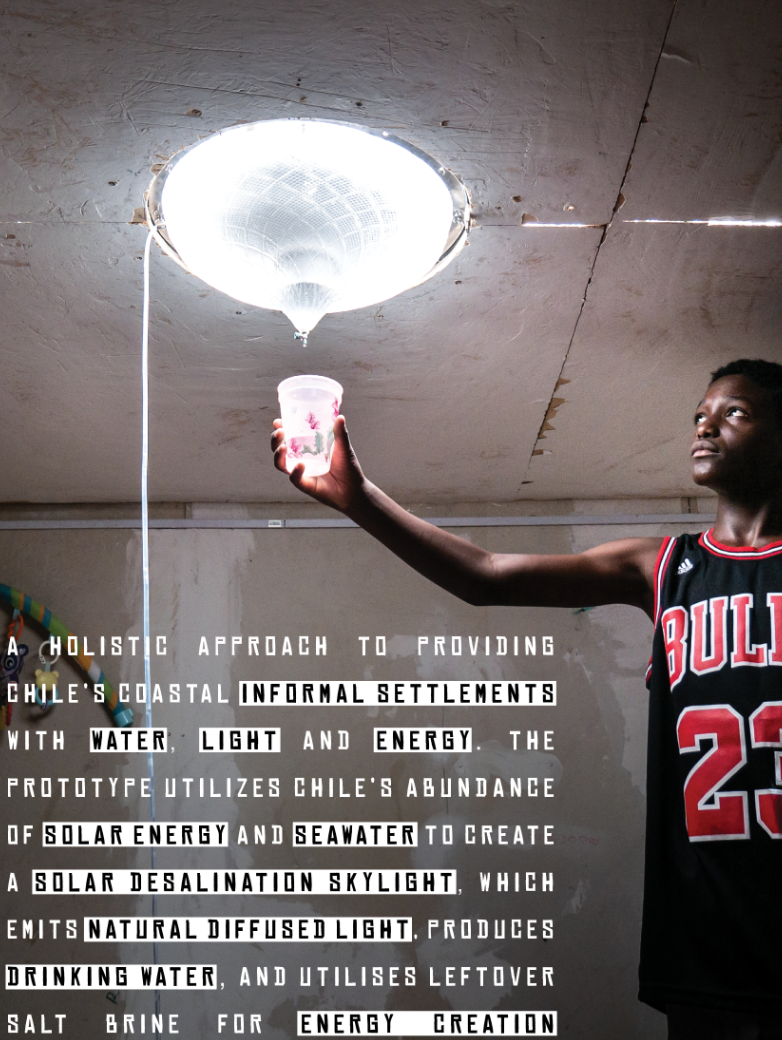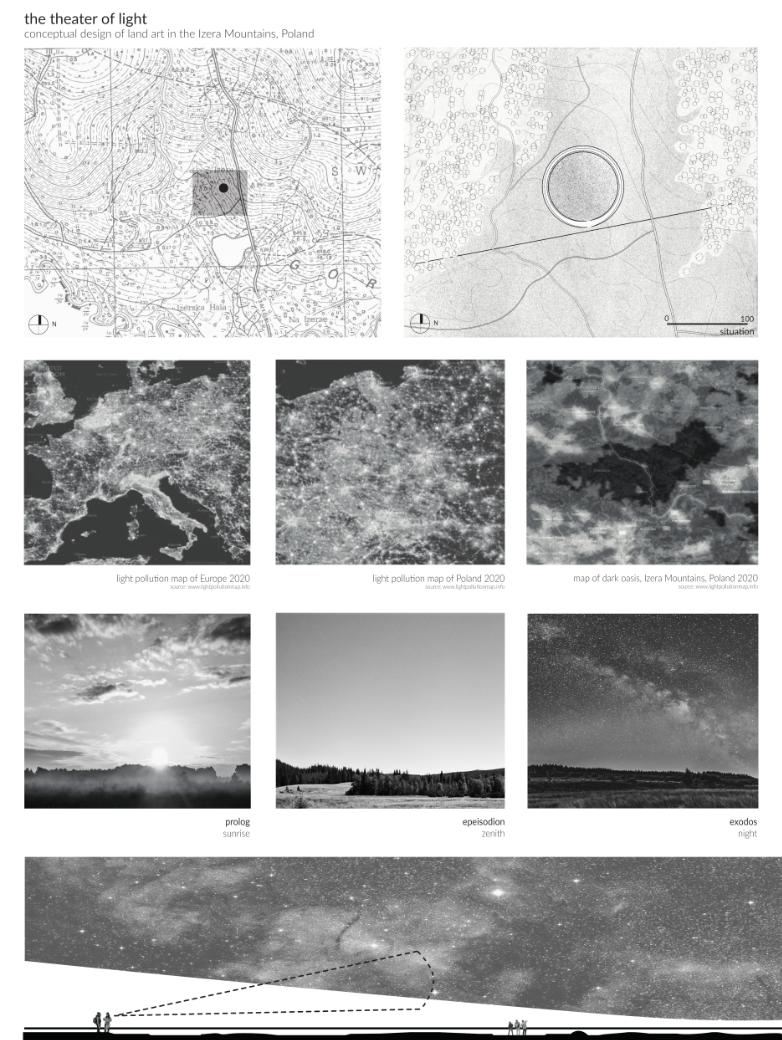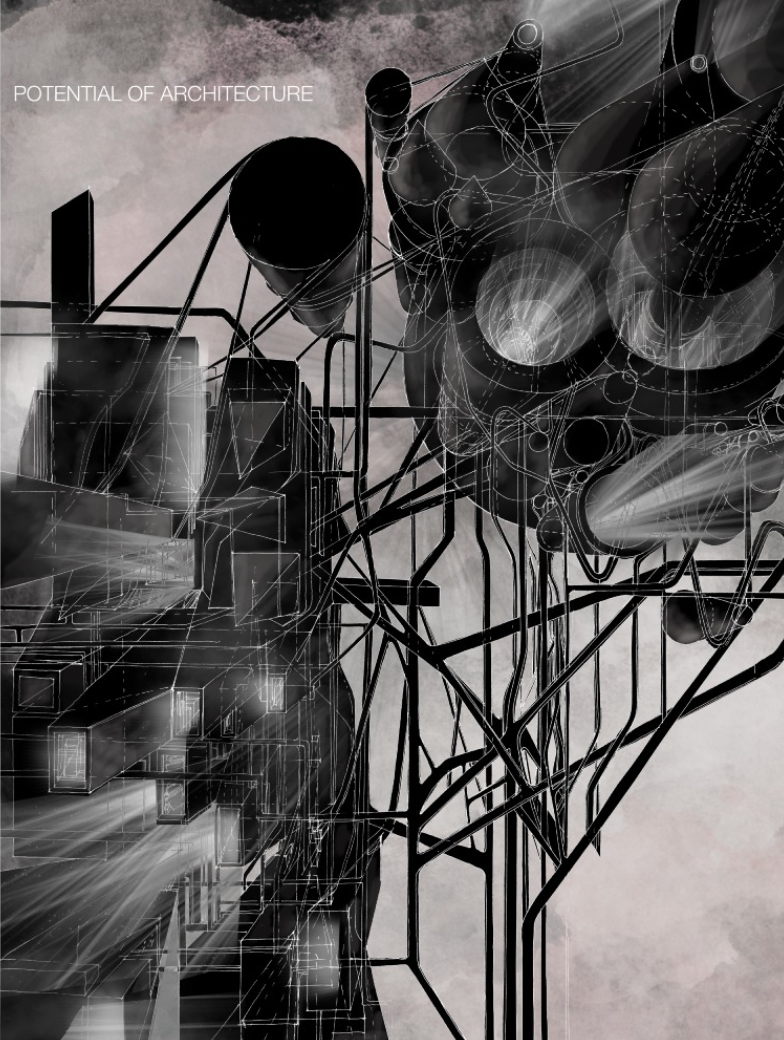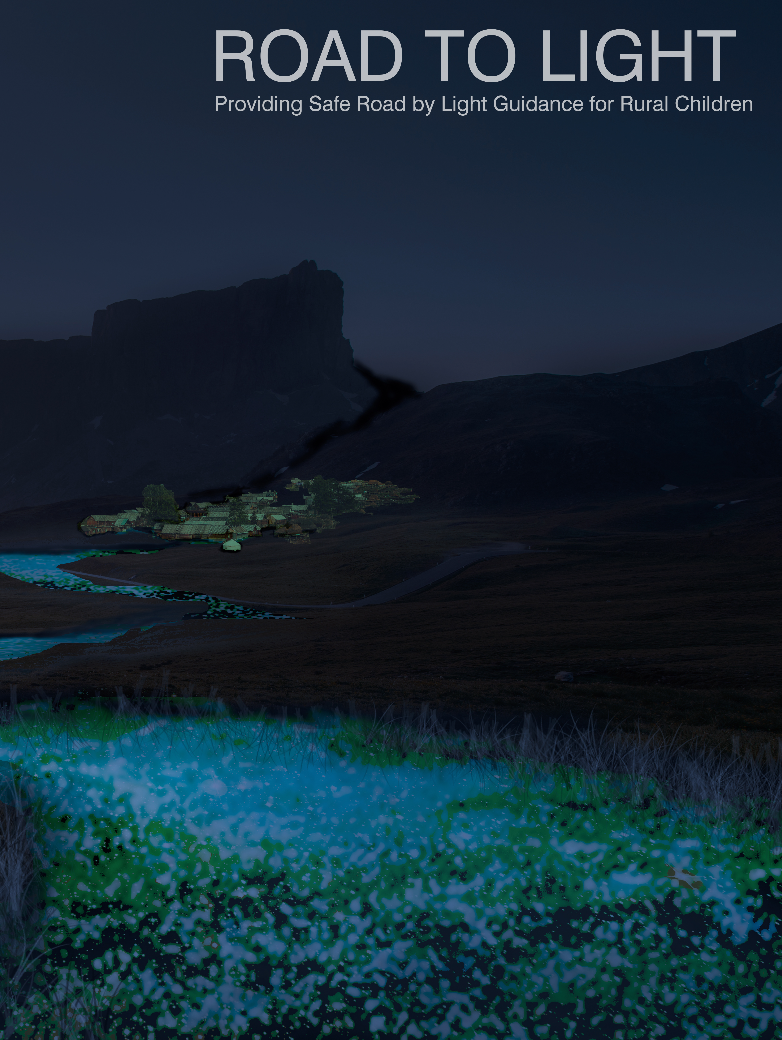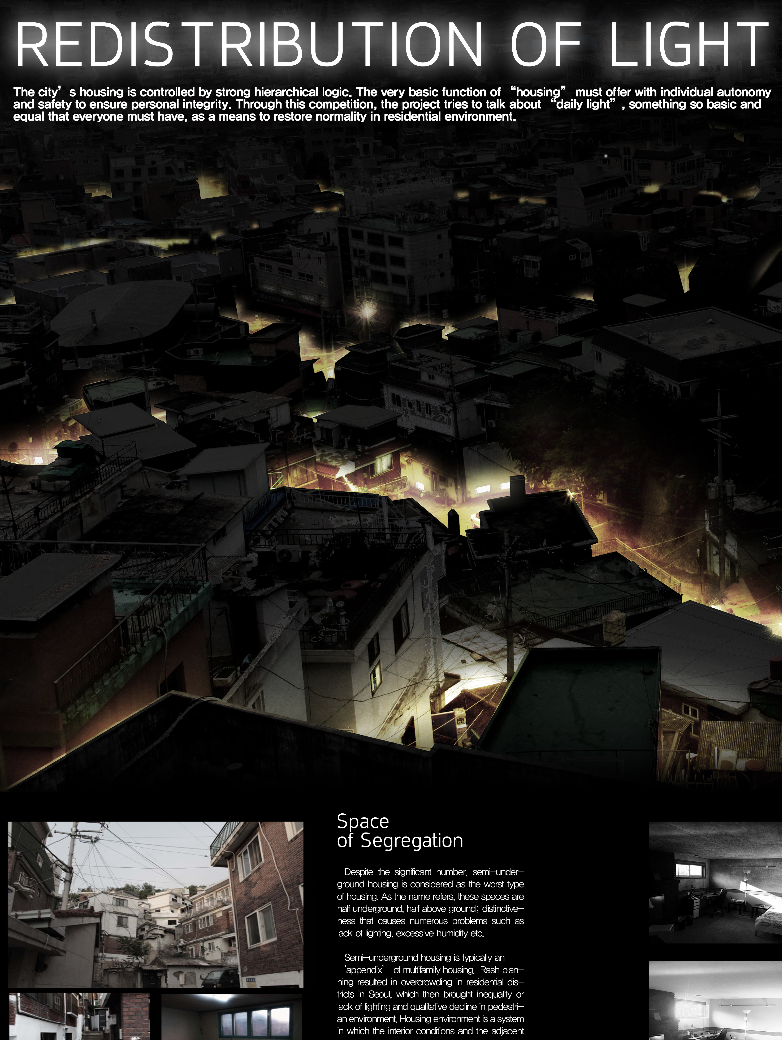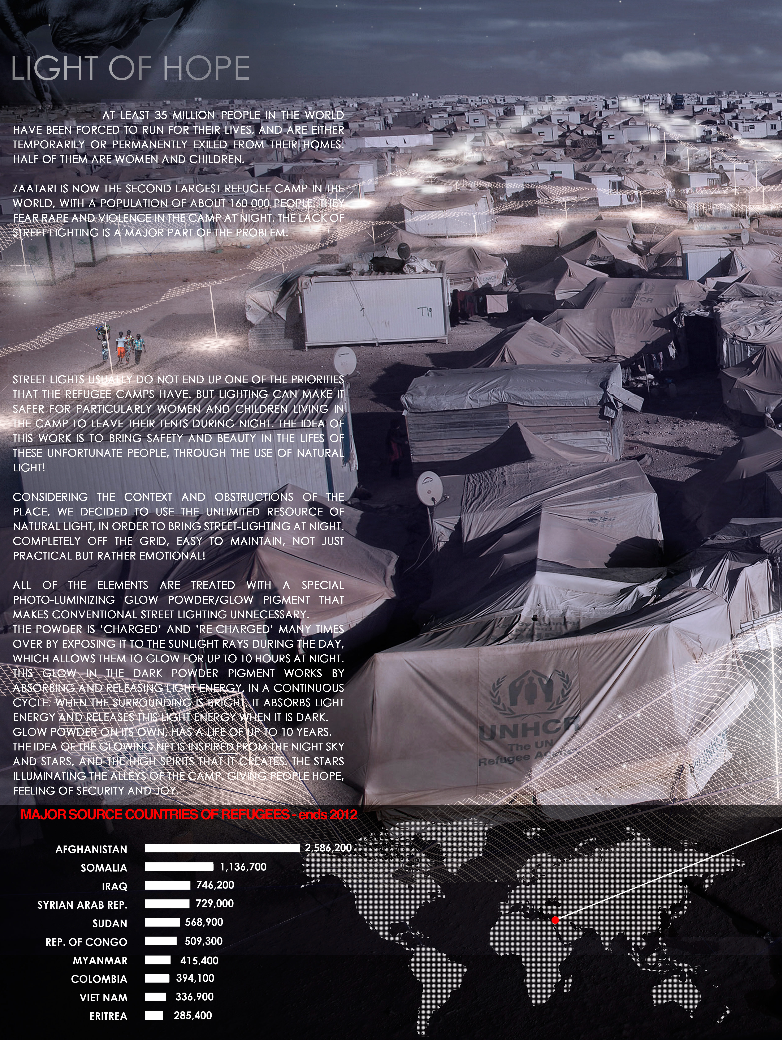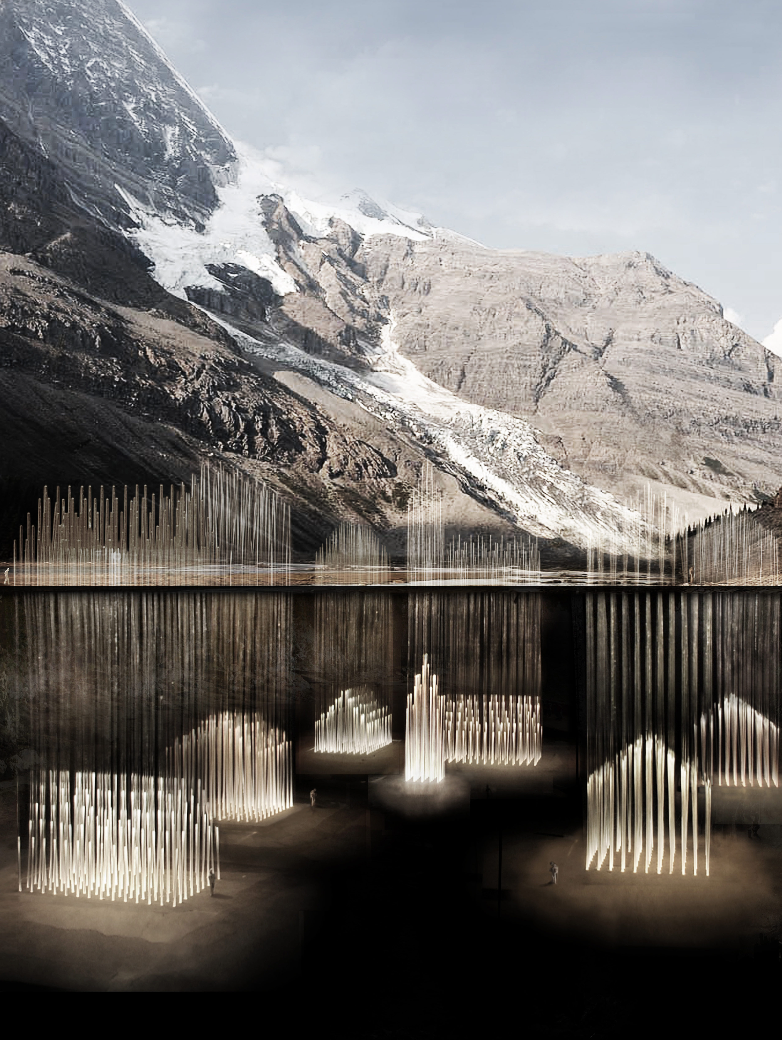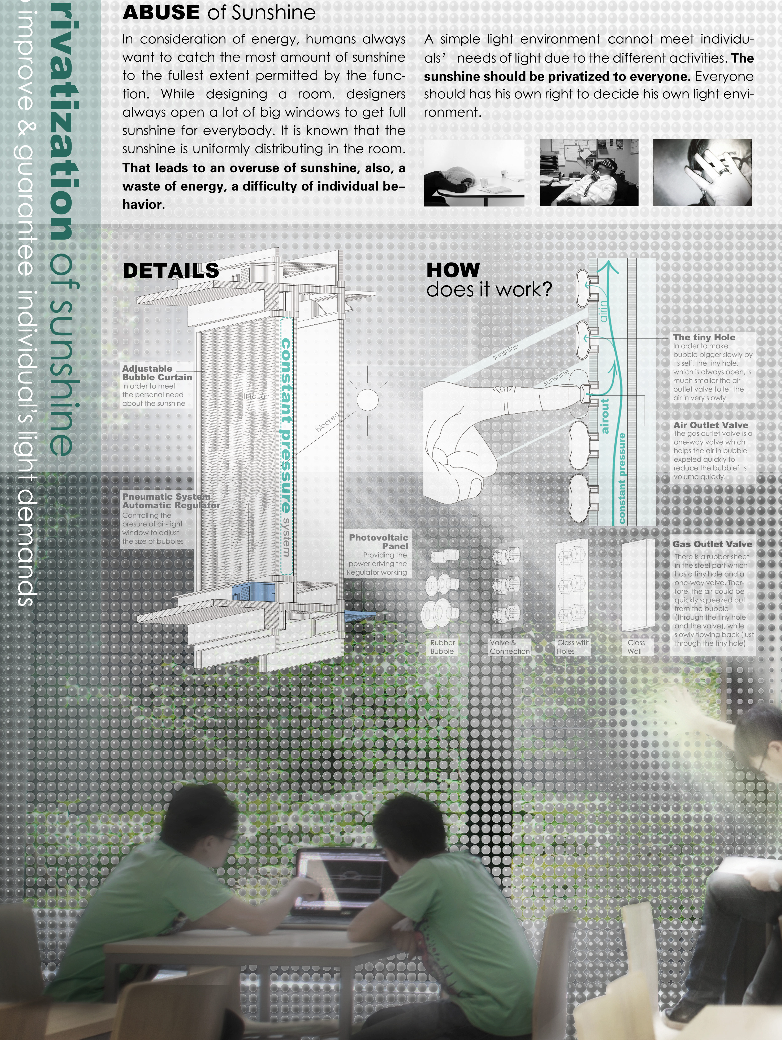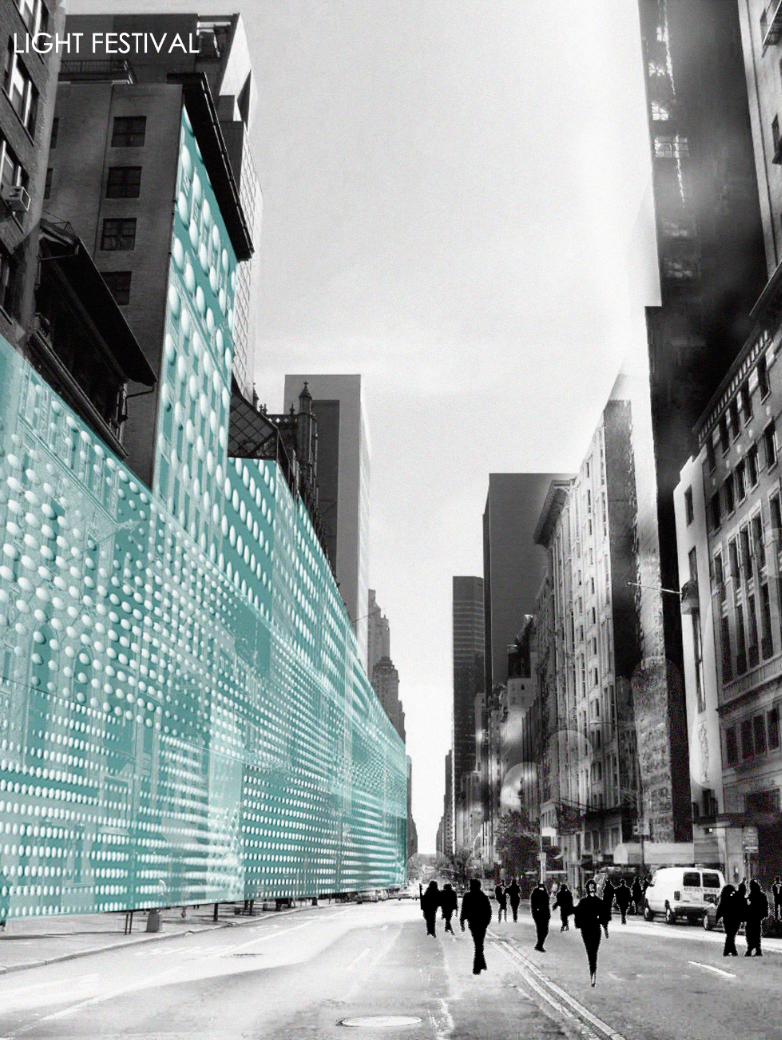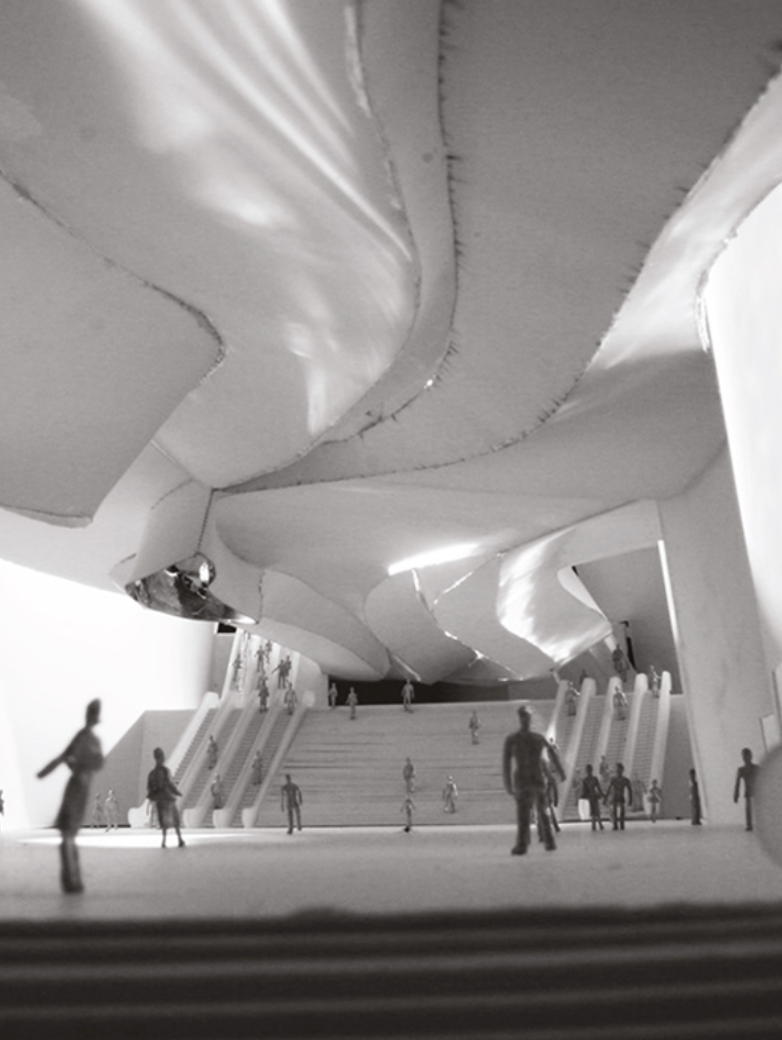Silo of the ambient light

Category
Daylight In Buildings - Region 1: Western Europe
Students
Anniina Rautakoski
Teacher
Janne Järvinen
School
Metropolia University of Applied Sciences
Country
Finland
Download
Download project board ↓
In the subarctic we are known for our long, dark, and snowy winters. Due to climate change the future winters will be prone to less and less snow. Signs of climate change can already be experienced. Summers and winters are generally warmer, which affects all humans, animals and nature. It is easy to forget how important snow truly is during dark winters. Snow is a highly reflective substance because of its white appearance and crystal composition, which reflects the light in all directions. Snow makes its surroundings much brighter and the reflected light is vital for our health. Of course we need daylight to see, but it also has a significant impact on our mental health. Most of our winter daylight is ambient light due to the cloudy weather which makes the lack of snow an even larger issue. Therefore, it is vital to maximize the little daylight we get during future winters.
Grain silos have a conical outlet on their bottom, which works as a natural daylight collector when it is opened on the top and is covered with reflective materials. When ambient light reaches the top of the silo, it bounces from side to side. The collected light has nowhere to escape but up. The silo works like a lantern and the clouds as a lampshade that reflects the
light back to the surroundings. This makes the environment more brighter. The silo itself can be a place to work, to socialize or just enjoy the daylight. The silo’s outlet can be opened as an oculus that gives the space focused daylight.
